Sign In
Welcome to AI Checker Sign in to continue your exploration of our platform with all its exciting features.
Forgot Password?
Don’t have an account ? Sign Up
Forgot Password
We'll Send You An Email To Reset Your Password.
Back to Login
Sign Up
Embrace the Future with AI Checker Sign up now and let's rewrite the possibilities together.
Already have an account? Sign In
Enter OTP
We'll send you an email to reset your password.
Back to Login
Enter OTP
We'll send you an OTP on your registered email address.
Back to Login
Confirm Password
Please enter your new password.
The Truth About AI Humanizer Tools: Do They Actually Bypass AI Detection?
 Megan Haris
Megan Haris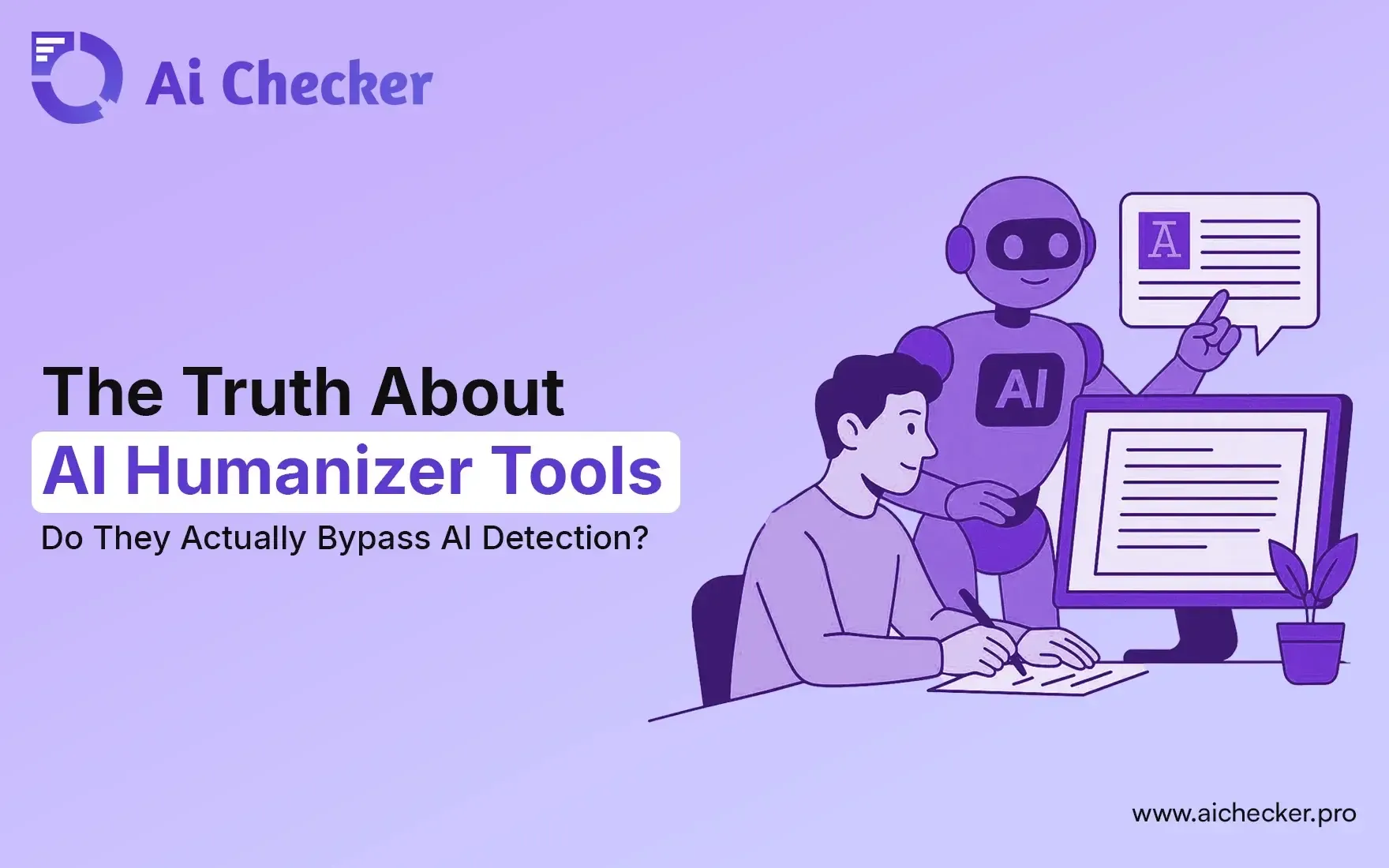
TABLE OF CONTENTS
What Are AI Humanizer Tools?
How Do AI Humanizers Work?
The Reality of AI Detection Tools
Can AI Humanizers Actually Bypass AI Detection?
What Google Really Thinks About AI Content
Benefits of Using AI Humanizer Tools
Top AI Humanizer Tools
Better Alternatives to AI Humanizer Tools
Limitations and Risks of AI Humanizers
The Role of E-E-A-T in AI-Generated Content
Best Practices for Using AI Humanizers Responsibly
Future Trends in AI Humanization and Detection
Conclusion
FAQs
The current digital age has transformed content creation as AI writing tools such as ChatGPT, Jasper, and Gemini are now able to produce content more easily than ever before. But there is one hitch: texts created by AI can be very mechanical, repetitive, and not as natural as a human text. This has seen the emergence of AI humanizer tools that promise to fix this issue.
These tools are bound to make your robotic AI text interesting to read which is not detected by AI systems. However, with all these claims and promises, it is important to learn to know what these tools can and cannot do. This guide will assist you in making a wise decision regardless of whether you are a student, content creator, marketer, or business owner when it comes to the use of AI humanizing tools.
What Are AI Humanizer Tools?
An AI content humanizer is a software application that is aimed at humanizing AI text by making it sound less artificial, more conversational, and more human-like. Imagine it as a language translator that can transform blindly like robotic language, into something that is alive and real.
These are quite different tools as compared to simple paraphrasing or spinning tools. They do not simply replace words, but examine the whole construction, tone and movement of your content. They recognize text sounds that are made artificial and substitute them with the ones that sound more natural.
To use the example, when it comes to AI text, which sounds like this: Artificial intelligence offers many benefits to businesses that aim to streamline their operational performance, a humanizer may transform it to: AI can really make business work smarter and more efficient.
The idea is straightforward: to make the artificial intelligence generated content appear to be written by an actual person with feelings, experiences, and a style of writing that would seem natural.
How Do AI Humanizers Work?
The humanizer AI tools are advanced technology, known as Natural Language Processing (NLP) and machine learning that is used to analyze and rewrite text. The process normally takes place in the following manner:
Pattern Recognition: The tool reads through your text to determine AI-like wordings like repetitive phrases, over-formal writing, and foreseeable sentence constructions that are typical of AI-generated texts.
Style Analysis: It examines the tone, voice, and style of writing to get to know how one can make it more natural and conversational.
Restructuring of the content: The tool then paraphrases the content, modifies the sentence structure, substitutes formal words with informal ones and introduces natural transitions between ideas.
Human-like Elements: Most of the tools provide elements that humans usually use in writing like contraction (cant instead of cannot), uneven sentence structures, and more personalized language.
The most sophisticated humanize AI content tools are large language models that have been trained on millions of texts written by humans to comprehend the natural ways of people expressing themselves. This assists them in producing work that is highly similar to the patterns of human handwriting.
The Reality of AI Detection Tools
In order to decide whether AI humanizers are effective, it is necessary in the first place to understand the way AI detection tools do their job. There are a number of ways that AI detectors such as GPTZero, Turnitin, and Originality.ai detect AI-generated content:
Statistical Analysis: These tools examine the pattern in choice of words, sentence format, and writing style that can be frequently observed in AI-produced text.
Perplexity Scoring: This will be used as a measure of the predictability of the text. The content created with AI is usually more predictable, whereas human writing can be unpredictable with unexpected word selections.
Burstiness Detection: This examines the variation of sentence length. It is a human tendency to write using different lengths of sentences (short, long, medium), and AI tends to create more homogeneous sentences.
Nevertheless, AI detectors do not work flawlessly. Studies indicate that they may be highly inaccurate:
False Positives: Sometimes, it will consider human written content as being created by an AI, primarily when it is written in a simple or formal manner.
Poor Consistency: The results provided by different detectors on the same content are usually inconsistent.
Bias Problems: Research indicates that detectors are biased against non-native English speakers and will usually mark their writing as AI-written.
In the actual sense, AI detectors are not foolproof and have an accuracy that is usually between 60 and 84 percent.
Can AI Humanizers Actually Bypass AI Detection?
The answer to this is: Yes, but not necessarily. The success of the AI humanizer tools used to evade detection is highly variable based on a number of factors:
Varies in Success Rates: As has been tested recently, the best AI humanizer tools have a bypass rate of between 70 and 100 percent based on the detector and type of content. There are tools such as StealthWriter and Undetectable AI, which have high success rates and some fail to bypass the detection constantly.
Content Type Matters: Humanizers are more productive when dealing with general content such as blog posts and articles, but can be less productive with technical, academic, and highly technical content.
Detector Differences: Two AI detectors may be fooled by a different text. No humanizer device will be able to ensure success in all detection systems.
Quality of Original Content: The quality of original AI content is determined by the extent to which it is easier to humanize. Bad AI text tends to give bad quality humanized results.
Practical experiments are inconclusive. Whereas some humanized content is able to evade detection, with scoring as low as 2% AI detection, other efforts are still investigated as AI-generated. The most important thing is to know that these tools are useful but not magic solutions.
What Google Really Thinks About AI Content
Google's official stance on AI content is clearer than many people think. In February 2023, Google published guidance stating that they don't penalize content simply because it was generated by AI. Instead, Google focuses on content quality regardless of how it was created.
Google's Key Requirements:
Content must be helpful and valuable to users
It should demonstrate Experience, Expertise, Authoritativeness, and Trustworthiness (E-E-A-T)
Content must be created with a people-first approach, not just for search rankings
Information should be accurate and well-sourced
What Google Penalises:
Low-quality content created primarily to manipulate search rankings
Mass-produced content that adds little value
Misleading or inaccurate information
Content that violates their spam policies
The important takeaway is that Google cares more about content quality than whether AI was involved in creating it. However, most AI-generated content needs human input and editing to meet Google's quality standards.
Benefits of Using AI Humanizer Tools
When used correctly, humanize AI content tools offer several valuable benefits:
Better Readability: The tools are able to enhance the level of engagement and readability of AI text to include natural flow and conversational tone.
Improved Engagement: Personalized content can usually work better with readers as it is more relevant and natural.
Time Saving: Humanizers can enhance the quality of content very fast in a few seconds compared to editing AI text manually.
False Positives: Sometimes, AI is deemed as human-written material. These false detection problems can be solved with the aid of humanizers.
Increased Credibility: More realistic sounding content is likely to enable you to gain the trust of your audience and increase your brand reputation.
Accessibility Support: These tools have the potential to assist non-native speakers of the English language or individuals with writing difficulties in developing more natural-sounding material.
Top AI Humanizer Tools
Here are some popular AI humanizer tools worth considering:
1. AIchecker Pro
The AIChecker.pro provides humanization and AI detection possibilities. It is aimed at assisting the content creators to detect text generated by an AI and refine it so that it can sound more natural. The tool offers specific analysis and ideas on how to make content more natural.
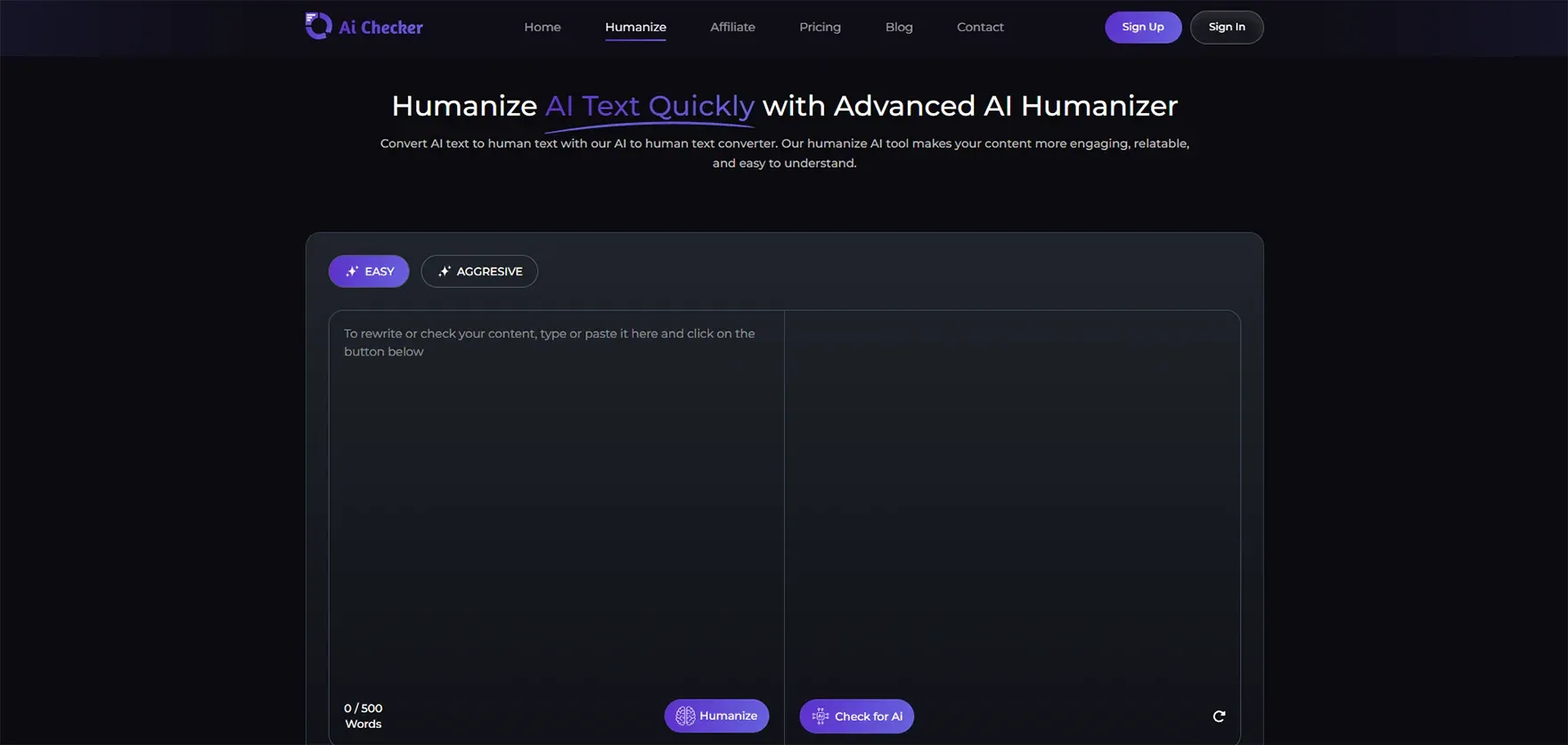
2. AssignmentGPT AI
AssignmentGPT AI is a company that focuses on academic content and provides a full-scale AI humanizer, which is targeted at students and teachers. It has the capacity to work in free words of up to 1000 and is dedicated to producing content that reads genuine but at the same time it incorporates academic integrity.
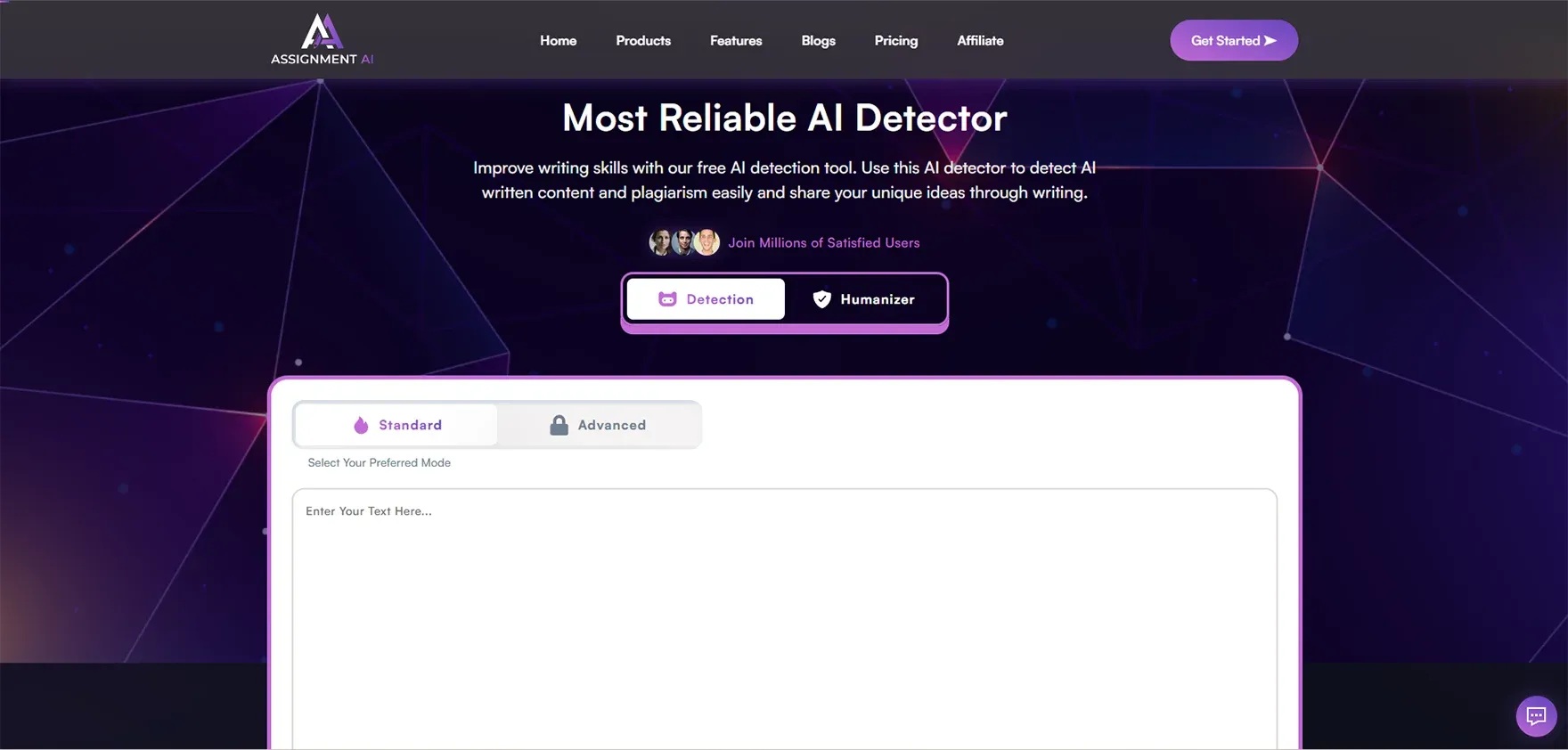
3. BypassAI IO
BypassAI.io also says that AI text is totally undetectable, and it supports more than 30 languages. Nonetheless, the mixed results are demonstrated by independent testing in which effectiveness also depends on the type of content and in regards to the detector.
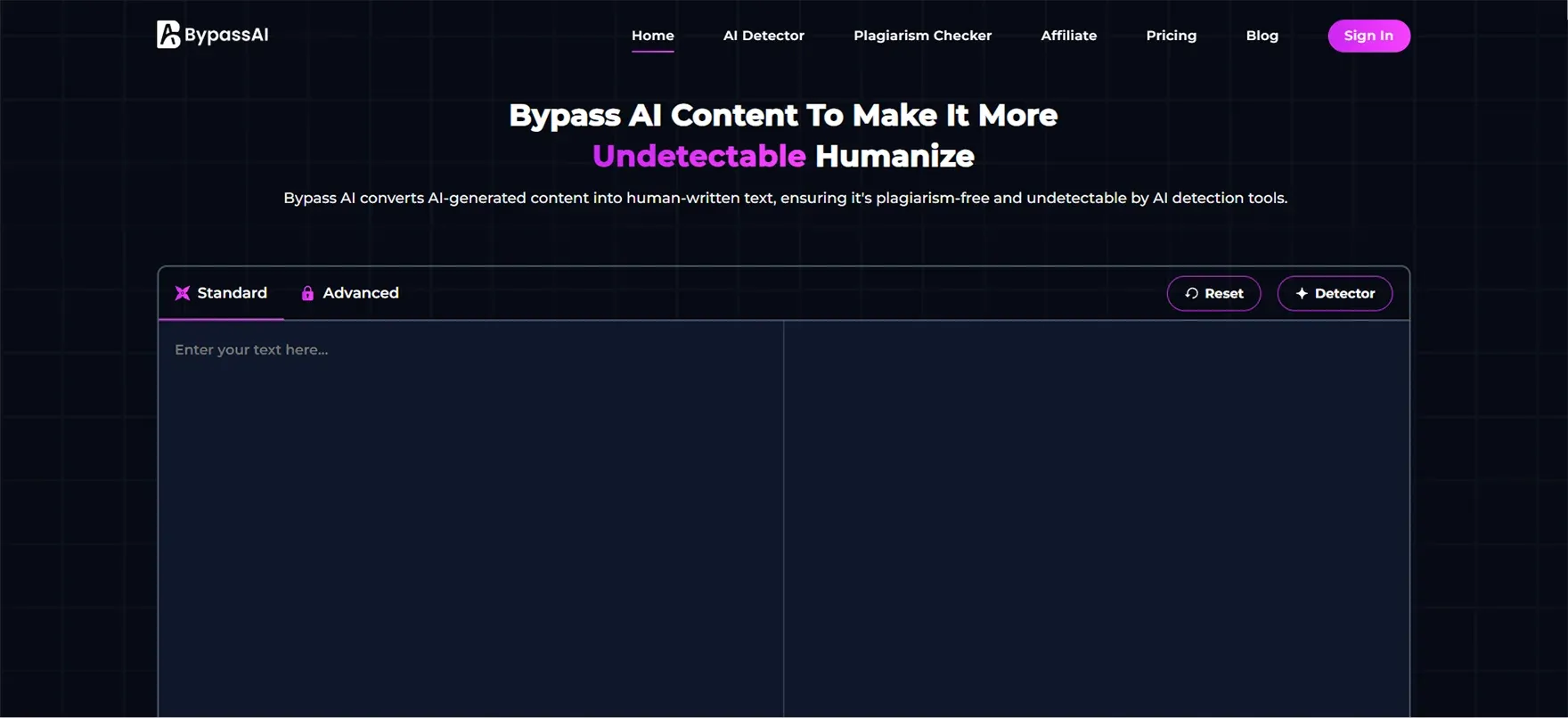
4. Quillbot
The AI humanizer is a component of the bigger writing platform of Quillbot. It also provides several rewrite options, and it can work toward the enhancement of the natural flow of AI-generated materials. It is easy to use and it has grammar check tools.
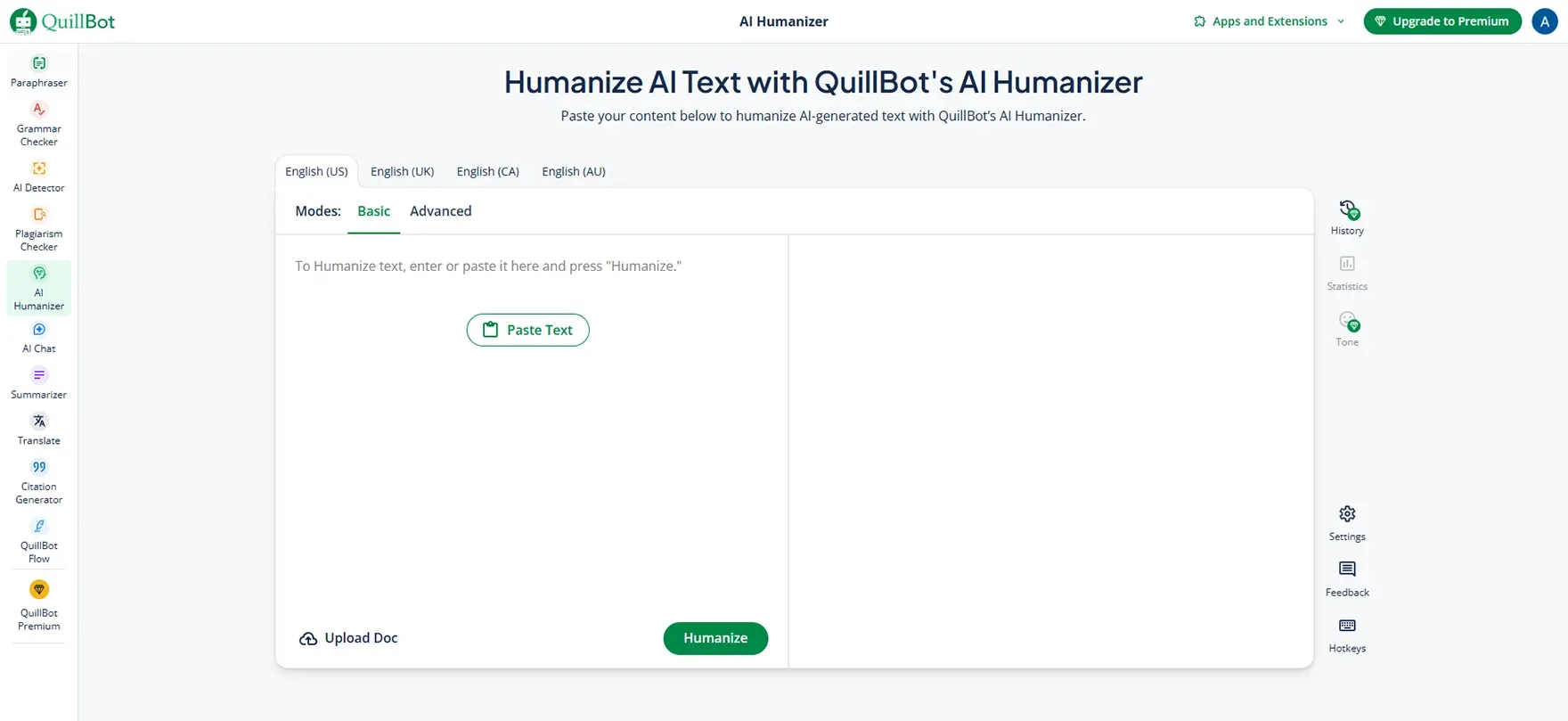
5. Humanize AI
Humanize AI is a tool that specifically concentrates on the translation of AI text into human-like one. It provides various writing styles and is able to process various forms of content such as academic articles to marketing texts.
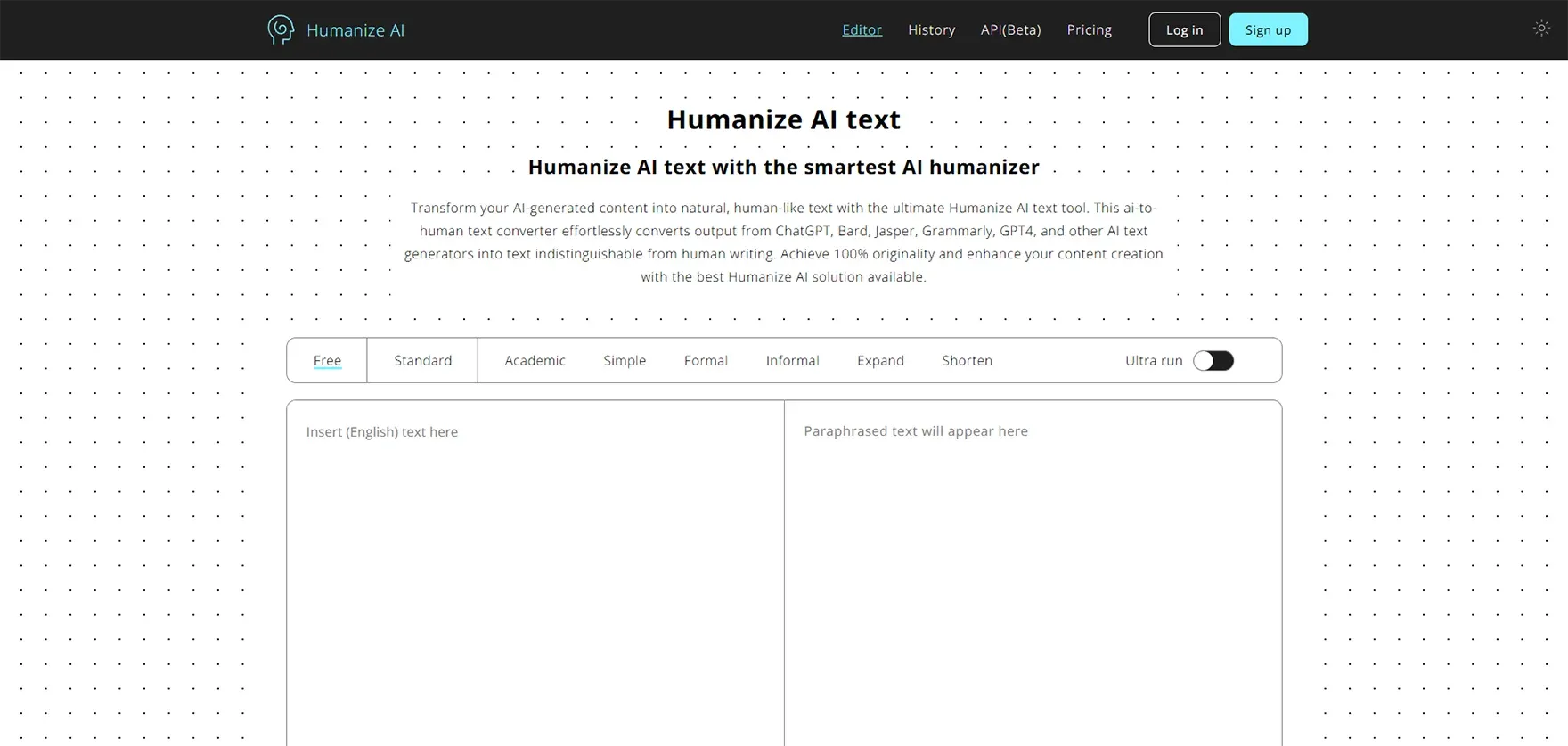
6. Undetectable AI
One of the more popular humanizer tools is Undetectable AI, as the tests have demonstrated rather high success rates in getting around AI detectors. It is provided with real time processing and a variety of humanization modes.
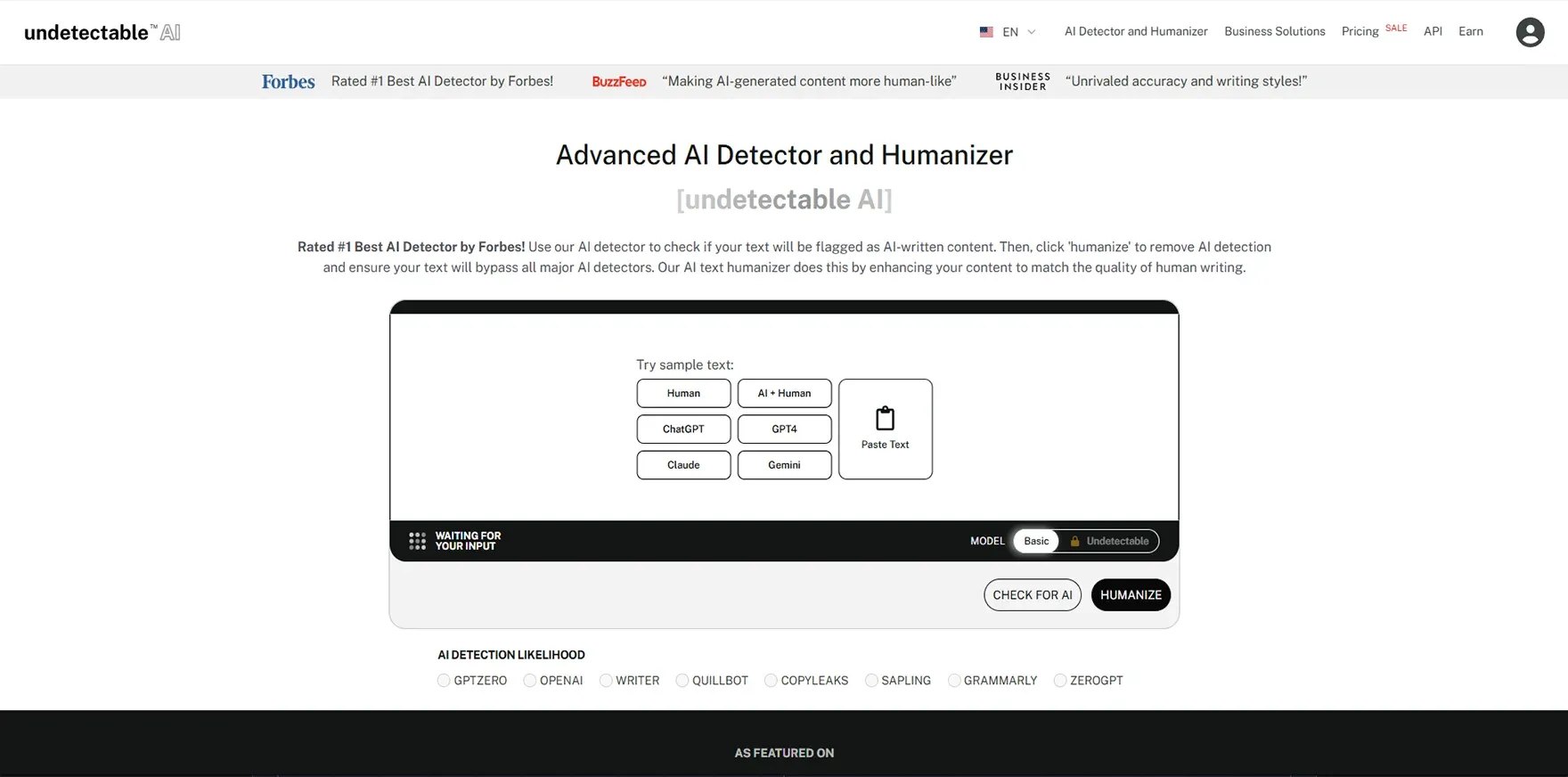
Better Alternatives to AI Humanizer Tools
While AI humanizers can be helpful, there are often better approaches to creating high-quality content:
Human-in-the-Loop Approach: Rely on AI to create first drafts, and then human employees to input their own insights, experience, and knowledge. This generates more valid and natural content.
Manual Editing: Spend time checking AI-created content manually. Incorporate your own voice, examples and views so that it becomes really unique.
Hybrid Content Creation: AI support and human creativity. AI is helpful in conducting research and outlining, but major sections should be written manually.
Give the Quality a priority rather than the Detection: Be prepared to write original, useful, and engaging content that is indeed helpful to your readers, rather than trying to deceive detectors.
Expert Review: Have subject matter experts review and improve AI-based content using their knowledge and experience.
Limitations and Risks of AI Humanizers
AI content humanizer tools come with several important limitations and risks that users should understand:
Problems with Accuracy: There are situations when humanizers modify the meaning of your text or even present some factual mistakes during the process of rewriting. This is to be reviewed prior to the output.
Lack of consistency: The rates of success differ greatly across the tools and types of content. What is effective with one piece may not be effective with another.
Voice Loss: Sometimes these tools will strip your brand voice or style of writing, and the content will be generic.
Over-reliance Risk: When you over rely on these tools and leave them to handle your content, there might not be the high quality content that you require to promote content to your audience.
Ethical Implications: There is a great concern of using humanizers to mislead readers or traveling around academic integrity policies.
Privacy Concerns: The content that you publish is processed in the servers of many online humanizer tools and may be unsafe in terms of the privacy of sensitive information.
False Confidence: The fact that the content has been passed through an AI detector does not imply that it is of high quality and is worth being read by the audience.
The Role of E-E-A-T in AI-Generated Content
Google's E-E-A-T framework (Experience, Expertise, Authoritativeness, Trustworthiness) is crucial for any content, whether AI-generated or human-written:
Experience: Content must reflect on-the-job experience and first-hand knowledge about the subject. This personal touch is usually lacking in AI-generated content.
Experience: The writers are expected to be well-informed and knowledgeable of what they are writing about. This is a human interaction and cannot be effectively executed by the power of AI.
Authoritativeness: The information must be based on accepted and reputed sources in the profession. It consists of good citations, reliable sources and credentials.
Credibility: The information should be precise, clear, and credible. This necessitates the verification of claims by AI with human verification.
Human supervision, personal knowledge, professional experience and correct sourcing are needed to comply with the standards of E-E-A-T with the content of AI. It is not sufficient to humanize the AI text but add some real human values to it.
Best Practices for Using AI Humanizers Responsibly
If you choose to use humanize text tools, follow these responsible practices:
Use as Starting Point: Humanized AI content is not a finished product. Add your own knowledge and skills always.
Fact-Check Everything: Check all the pieces of information, claims, and statistics in the humanized content. AI may cause errors in the rewriting process.
Add Personal Value: Add your own examples, experiences, and viewpoints in order to make the content really useful.
Keep it transparent: Use the concept of being transparent when AI played an important role in your work, particularly in academia or business.
Centralize on Quality: This should be about producing quality and useful content to your audience as opposed to just evading detection.
Periodic Check: Compare your work to E-E-A-T principles to be sure it is of high quality.
Respect Policies: Adhere to the rules of your institution/platform as far as AI usage and disclosure are concerned.
Future Trends in AI Humanization and Detection
The landscape of AI humanization and detection continues to evolve rapidly:
Enhancing Detection: AI detectors continue to get more advanced and have the potential to eventually detect humanized content better.
More Sophisticated Humanizers: The next generation humanizer tools are more likely to be more accurate in preserving the meaning and more natural sounding contents.
Multimodal Content: The technology can go beyond the text to incorporate voice and video humanization.
Regulatory Adoptions: New regulations regarding AI content disclosure and use may be established by governments and other institutions.
Quality Focus: It is likely that the focus will be on more than just defaulting the detection process and will focus on genuinely valuable content to be created by humans.
To anticipate such changes, content creators need to invest in quality and transparency, and not only avoid detection.
Conclusion
The truth about AI humanizer tools is nuanced. While they can sometimes successfully bypass AI detection and improve the readability of AI-generated content, they're not magic solutions. Success rates vary significantly, and no tool can guarantee consistent results across all detectors and content types.
More importantly, focusing solely on bypassing detection misses the bigger picture. The goal should be creating high-quality, valuable content that serves your audience well. This requires human insight, expertise, and creativity that no tool can fully replicate.
Key Takeaways:
AI humanizers can be helpful, but aren't foolproof for bypassing detection
Quality and value should be prioritised over detection avoidance
Human oversight and input remain essential for creating truly good content
Transparency and ethical use are important considerations
The technology continues to evolve, so stay informed about changes
Whether you choose to use these tools or not, remember that the best content combines the efficiency of AI with the insight, creativity, and expertise that only humans can provide.
FAQs
1. Do AI humanizer tools really work to bypass detection?
AI humanizers can sometimes bypass detection, with success rates varying from 70% to 100% depending on the tool and detector used. However, results are inconsistent and no tool guarantees success across all AI detectors.
2. Is it safe to use AI humanizer tools?
Generally yes, but be cautious about privacy when using online tools with sensitive content. Also consider ethical implications and institutional policies regarding AI use and disclosure.
3. Can Google detect if I use AI humanizer tools?
Google doesn't specifically penalise AI-generated or humanized content. Instead, they focus on content quality, helpfulness, and whether it meets E-E-A-T standards regardless of how it was created.
4. What's the best alternative to using AI humanizers?
The best approach is manually editing AI content by adding personal insights, expertise, and human perspective. This creates more authentic and valuable content than automated humanization.
5. Are there free AI humanizer tools available?
Yes, many tools offer free versions with limited usage, including AssignmentGPT.ai (1000 words), Quillbot (125 words), and others. However, paid versions typically offer more features and higher usage limits.
6. Can AI humanizers change the meaning of my content?
Yes, humanizers can sometimes alter meaning or introduce errors during rewriting. Always review and fact-check the output before publishing.
7. Should I disclose when I use AI humanizer tools?
This depends on context and policies. In academic settings or professional contexts where transparency matters, disclosure is often recommended or required.

Megan Haris
Content writer at @Aichecker
I am a content writer at AI Checker Pro, where I craft engaging, SEO-optimized content to enhance brand visibility and educate users about our AI-driven solutions. My role involves creating clear, impactful messaging across digital platforms to drive engagement and support company growth.



